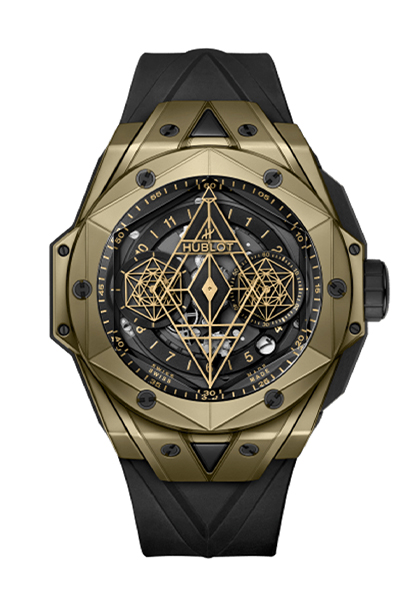When you enter the Manufacture, you have to push the first door on the right, just after the reception area. There you will find a studious silence, with not a watchmaker in sight but instead a line of high-tech machines programmed by busy engineers and technicians. We are in Hublot’s Nyon-based Research and Development department. “A kind of start-up within the company”, says Sébastien with a smile. He is one of the materials engineers who is particularly involved with Magic Gold – the gold with a 1000 Vickers hardness invented by Hublot a little over 10 years ago. In his workshop, this alumnus of the Swiss Federal Institute of Technology Lausanne (EPFL) is responsible – among other things – for producing this gold with its unique properties while continuing research into new materials. “We are constantly seeking to improve the reliability and reproducibility of the materials we have invented”, he says. When dealing with this type of invention, “there are many failures and one should never take it anything for granted”.

Once melted, the gold is injected under high pressure to fuse with the ceramic. The resulting Magic Gold tubes are then machined using spark-erosion technology.
Producing such a material is indeed a delicate art. Composed of 75% gold and 25% boron carbide, Magic Gold stems from a complex alchemy. As gold is by nature resistant to mixing with materials other than metal, new solutions had to be found. The ceramic powder is first shaped into a tube by pressing it into molds. After sintering at a temperature of more than 2000 degrees Celsius, the powder grains are welded together, resulting in a rigid yet porous ceramic tube. The next step is to inject molten gold into the pores of this tube in a furnace heated to 1100 °C under 200-bar pressure. The complexity of these operations results in very limited production. The engineers in the R&D department produce two tubes of Magic Gold per week, which makes it possible to machine the cases, crowns and bezels of some 250 watches per year, including the new Big Bang Sang Bleu II Magic Gold presented in January. A model that cannot be scratched, except with a diamond.

As a WorldTempus reader, we are delighted to offer you the latest digital version of this GMT magazine that you can download here. Happy reading!






